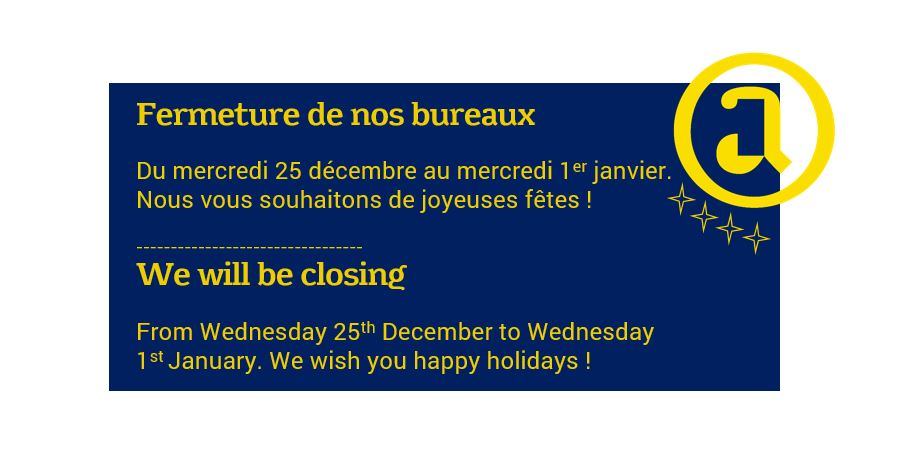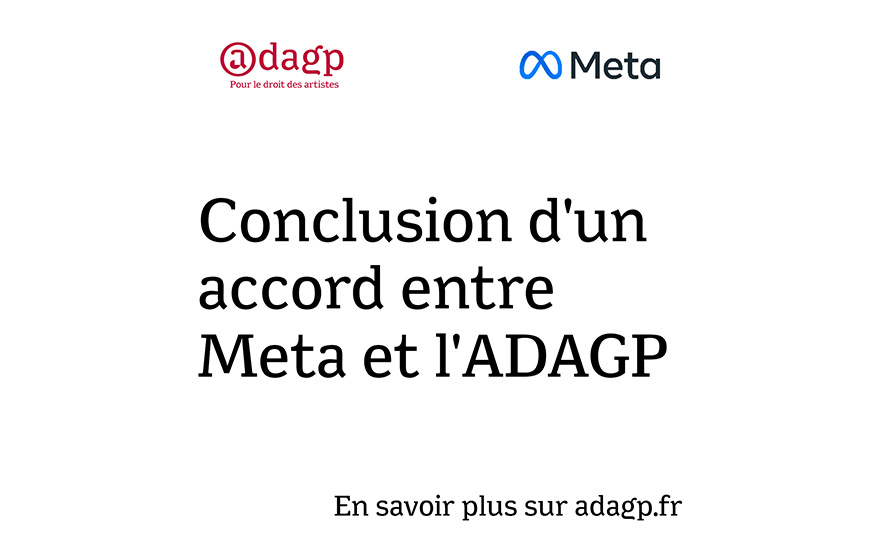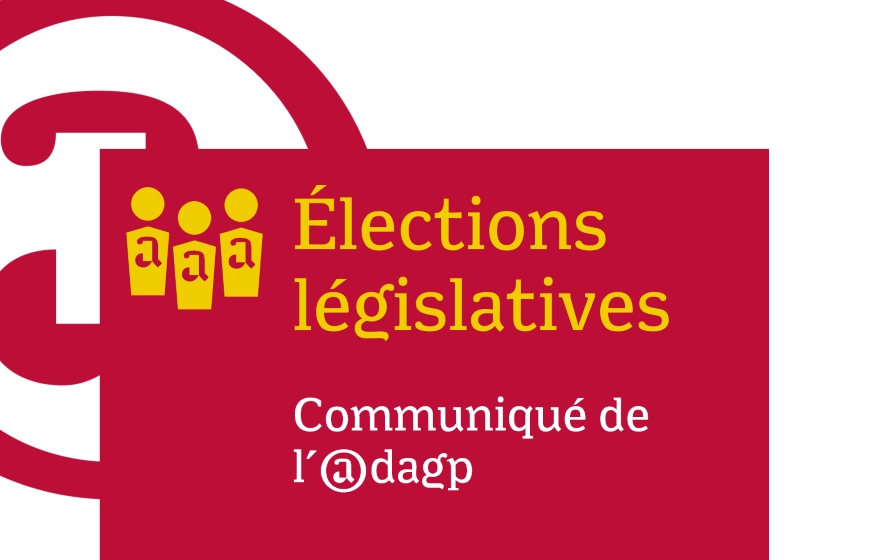PARCOURS - L'œuvre d'art à la trace" copyright Symposium
On Thursday 30 November 2023, to mark its 70th anniversary, ADAGP is organising a major symposium entitled "PARCOURS - L'œuvre d'art à la trace" at the BnF - François Mitterrand, under the scientific direction of Tristan Azzi, professor at the Sorbonne Law School, Université Paris 1 Panthéon-Sorbonne.
The day will follow a dual path, that of the work itself and that of ADAGP. It will be organised around 4 main topics, divided into 5 round tables bringing together artists, academics, members of parliament, gallery owners, curators, international organisations, etc.
![]()
Programme :
MORNING
I. - Creating: the artistic journey of the artwork (10.00am-12.30pm)
Round table 1. - The artwork and its creator in the visual arts
In the chair : Pierre Sirinelli, Emeritus Professor at the Sorbonne Law School, Université Paris 1 Panthéon-Sorbonne
The journey of an artwork begins with its creation. From the point of view of copyright, two classic questions arise: under what conditions is a work protected by copyright? Who is entitled to such protection? On the face of it, the answers are simple: on the one hand, the existence of copyright presupposes that the creation is embodied in an original form, in other words in an object bearing the imprint of the author's personality; on the other hand, it is the author who, in principle, is entitled to protection. In practice, however, a number of thorny and recurring difficulties have arisen, especially in the visual arts. The form of the work is sometimes difficult to grasp. Originality, for its part, takes on different meanings that need to be clearly distinguished. Proof of originality also gives rise to debate. Finally, the determination of authorship can sometimes prove complex, particularly when several people claim to have contributed to the creation of the work, against a backdrop of opposition between intellectual conception and material execution. On these fundamental questions, which are in fact the starting point for any reflection on art, the lawyer's eye must necessarily be confronted with other approaches.
Speakers:
- Stéphane Corréard, Art critic, gallery owner and contemporary art expert
- Emmanuel Tibloux, Director of the École nationale supérieure des arts décoratifs
Discussion with the audience
Round Table 2. - The visual arts and the challenge of artificial intelligence
In the chair: Alexandra Bensamoun, Professor of Private Law at the University of Paris-Saclay
The graphic, plastic and photographic arts have been greatly affected by the development of generative artificial intelligence. AI is fed by existing artworks and produce results that can have all the trappings of human creations. The stakes, whether artistic, economic or legal, are considerable. Once again, the movement invites us to reflect on the notions of work and author. We also need to consider how artists can be protected in this new digital revolution.
Speakers:
- Frédéric Maupomé, Comic strip author
- Sylvie Robert, Senator for Ille-et-Vilaine, Vice-President of the French Senate
- Anke Schierholz, President of European visual artists (EVA)
Discussion with the audience
![]()
AFTERNOON
Live drawing performance by Thibaut Soulcié (round tables 3 and 5)
II. - Selling: the commercial journey of the artwork (2.00pm-3.15pm)
Round Table 3. - From the traditional market to the virtual market
In the chair: Sylvie Forbin, Deputy Director General off Copyright and Creative Industries for the World Intellectual Property Organisation
Unique to the visual arts, the resale right entitles the author, and then his or her heirs during the seventy years following his or her death, to receive remuneration when the work is resold by an art market professional. Created in France in 1920, the resale right is provided for in the most important international convention on copyright, the Berne Convention. However, according to the Berne Convention, this is an optional prerogative. As the art market is a global one, the World Intellectual Property Organisation is currently considering ways of making droit de suite universal, which is the subject of the first part of the round table. In addition to the issues relating to artificial intelligence discussed above, digital technology is also having an impact on the commercial life of works of art, enabling the emergence of a genuine 'virtual' market alongside the traditional physical market. This includes NFTs and the metaverse. The second part of the round table is devoted to them.
Speakers:
- Soly Cissé, Artist
- Dominique Sagot-Duvauroux, Professor of Economics at the University of Angers
- Magda Danysz, Art galerist
Discussion with the audience
III. - Documenting: the historical trajectory of the artwork (3.45pm – 5.00pm)
Round Table 4. - Describing art and writing about art in the 21st century
In the chair: Françoise Labarthe, Professor of Private Law at the University of Paris-Saclay
The catalogue raisonné is an invaluable tool for listing artist's arworks and documenting their career. Here again, digital technologies are opening up new horizons, both in terms of catalogue design and consultation. The law is not to be outdone in this area, and the legal status of the catalogue raisonné needs to be clarified. The historical development of the artwork also depends, among other things, on the indispensable work carried out by museums and their curators. Finally, going beyond the strictly scientific framework, we need to consider works and artists as genuine literary material, their history also being written in novels.
Speakers:
- Meret Meyer, Publisher, exhibition curator, granddaughter of Marc Chagall and co-president of the Marc Chagall Committee
- Anne Berest, Novelist
- Michel Gauthier, Curator at the Musée national d'art moderne - Centre Pompidou
Discussion with the audience
IV. - Protecting: the legal and litigious path of the artwork (5pm - 6pm)
Round Table 5. - The fight against forgery and counterfeiting
In the chair: Tristan Azzi, Professor at the Sorbonne Law School at the University of Paris 1 Panthéon-Sorbonne
Forgeries and counterfeits are detrimental to the smooth operation of the art market and undermine a number of interests: those of artists and their rightful owners, of course, but also those of collectors and professionals, of ordinary amateurs who believe they are looking at authentic works and even those of the State, which cannot afford to be indifferent to a cleaner market. Admittedly, there are various mechanisms in place to combat this scourge, but they are far from perfect. In particular, the venerable Bardoux law of 9 February 1895 on art fraud has had its day. Its many weaknesses have long been criticised. The Senate recently took up the issue, adopting an ambitious bill to reform the Bardoux Act on 16 March 2023. The debates in the National Assembly should be enriched by the conclusions of a mission on the subject conducted under the aegis of the Conseil supérieur de la propriété littéraire et artistique. The issue is therefore more topical than ever.
Speakers:
- Hubert Percie-du-Sert, Police Colonel, Central Office for Combating Illicit Trafficking in Cultural Property (OCBC)
- Hervé Di Rosa, artist, President of ADAGP
Discussion with the audience
Conclusion
- Gadi Oron, Director General of the International Confederation of Societies of Authors and Composers (CISAC)
- Marie-Anne Ferry-Fall, Director of ADAGP
View the full programme
![]()


